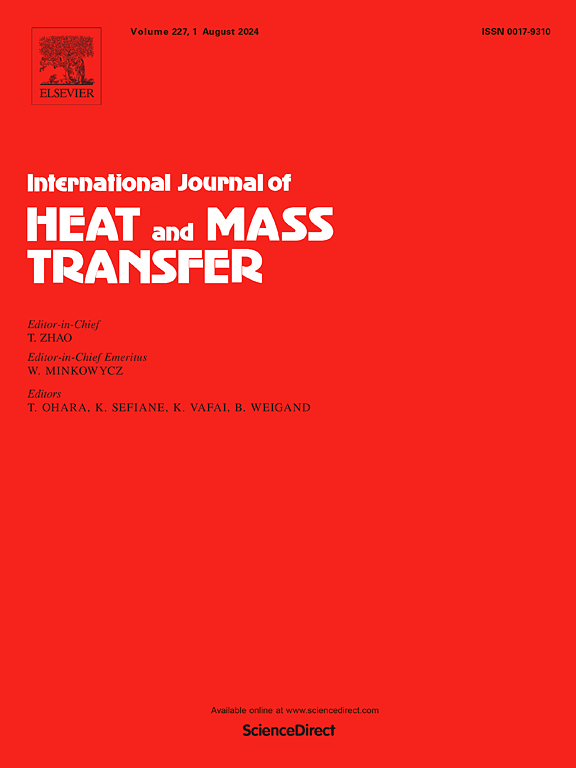Experimental investigation of the effects of transverse vibration on the supercritical CO2 heat transfer characteristics in vertical tubes
IF 5
2区 工程技术
Q1 ENGINEERING, MECHANICAL
International Journal of Heat and Mass Transfer
Pub Date : 2025-02-07
DOI:10.1016/j.ijheatmasstransfer.2025.126786
引用次数: 0
Abstract
Mechanical motion is unavoidably accompanied by vibration, which has an effect on fluid heat transfer. However, few investigations have been conducted on the effects of vibration on heat transfer characteristics of supercritical CO2 (SCO2). In this paper, effects of transverse vibration on heat transfer characteristics of SCO2 during upward flow in a vertical tube (d = 4.57 mm, 20379≤Re≤88285) are studied experimentally. The results show that vibration achieves heat transfer enhancement. Specifically, with the increase of vibration amplitude and vibration frequency, the wall temperature decreases, the heat transfer coefficient increases, and the heat transfer enhancement efficiency (HTE) shows an upward trend. HTE of amplitude outweighs that of frequency over the test range, with an HTE of up to 32.70%. Heat transfer enhancement of vibration mainly acts in the region before mainstream enthalpy reaches pseudo-critical enthalpy. Based on pseudo-boiling theory, the reason for vibration-enhanced heat transfer is analyzed. Vibration weakens the thickness of gas-like film near the wall, thus accelerating heat transfer between the cold mainstream and the wall. A heat transfer correlation for vertical tubes under vibration is proposed based on 3822 experimental data points, which captures 94.2 % of the experimental data within ±30 % error.
求助全文
约1分钟内获得全文
求助全文
来源期刊
CiteScore
10.30
自引率
13.50%
发文量
1319
审稿时长
41 days
期刊介绍:
International Journal of Heat and Mass Transfer is the vehicle for the exchange of basic ideas in heat and mass transfer between research workers and engineers throughout the world. It focuses on both analytical and experimental research, with an emphasis on contributions which increase the basic understanding of transfer processes and their application to engineering problems.
Topics include:
-New methods of measuring and/or correlating transport-property data
-Energy engineering
-Environmental applications of heat and/or mass transfer

 求助内容:
求助内容: 应助结果提醒方式:
应助结果提醒方式:


